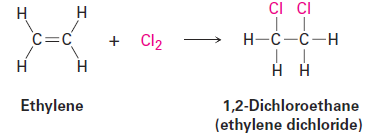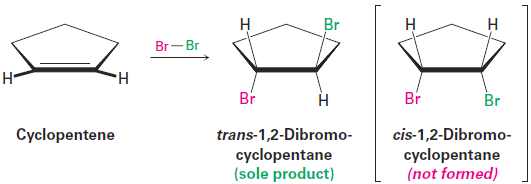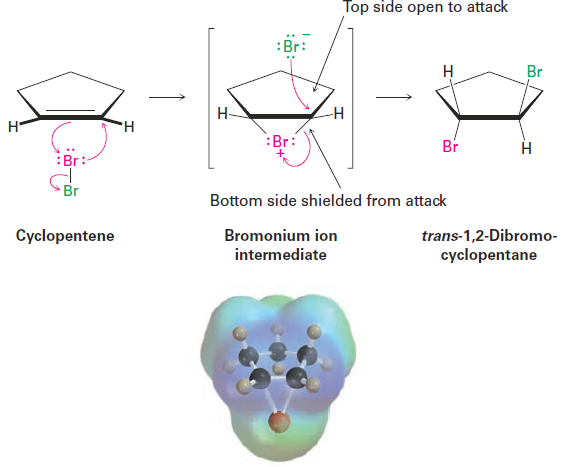

علم الكيمياء

تاريخ الكيمياء والعلماء المشاهير

التحاضير والتجارب الكيميائية

المخاطر والوقاية في الكيمياء

اخرى

مقالات متنوعة في علم الكيمياء

كيمياء عامة


الكيمياء التحليلية

مواضيع عامة في الكيمياء التحليلية

التحليل النوعي والكمي

التحليل الآلي (الطيفي)

طرق الفصل والتنقية


الكيمياء الحياتية

مواضيع عامة في الكيمياء الحياتية

الكاربوهيدرات

الاحماض الامينية والبروتينات

الانزيمات

الدهون

الاحماض النووية

الفيتامينات والمرافقات الانزيمية

الهرمونات


الكيمياء العضوية

مواضيع عامة في الكيمياء العضوية

الهايدروكاربونات

المركبات الوسطية وميكانيكيات التفاعلات العضوية

التشخيص العضوي

تجارب وتفاعلات في الكيمياء العضوية


الكيمياء الفيزيائية

مواضيع عامة في الكيمياء الفيزيائية

الكيمياء الحرارية

حركية التفاعلات الكيميائية

الكيمياء الكهربائية


الكيمياء اللاعضوية

مواضيع عامة في الكيمياء اللاعضوية

الجدول الدوري وخواص العناصر

نظريات التآصر الكيميائي

كيمياء العناصر الانتقالية ومركباتها المعقدة


مواضيع اخرى في الكيمياء

كيمياء النانو

الكيمياء السريرية

الكيمياء الطبية والدوائية

كيمياء الاغذية والنواتج الطبيعية

الكيمياء الجنائية


الكيمياء الصناعية

البترو كيمياويات

الكيمياء الخضراء

كيمياء البيئة

كيمياء البوليمرات

مواضيع عامة في الكيمياء الصناعية

الكيمياء الاشعاعية والنووية
Halogenation of Alkenes: Addition of X2
المؤلف:
John McMurry
المصدر:
Organic Chemistry
الجزء والصفحة:
9th. p 222
19-5-2017
5459
Halogenation of Alkenes: Addition of X2
Bromine and chlorine add rapidly to alkenes to yield 1,2-dihalides, a process called halogenation. For example, more than 25 million tons of 1,2-dichloroethane (ethylene dichloride) are synthesized worldwide each year, much of it by addition of Cl2 to ethylene. The product is used both as a solvent and as starting material for the manufacture of poly(vinyl chloride), PVC. Fluorine is too reactive and difficult to control for most laboratory applications, and iodine does not react with most alkenes.

Based on what we’ve seen thus far, a possible mechanism for the reaction of bromine with alkenes might involve electrophilic addition of Br+ to the alkene, giving a carbocation intermediate that could undergo further reaction with Br- to yield the dibromo addition product.

Although this mechanism seems plausible, it’s not fully consistent with known facts. In particular, it doesn’t explain the stereochemistry of the addition reaction. That is, the mechanism doesn’t tell which product stereoisomer is formed.
When the halogenation reaction is carried out on a cycloalkene, such as cyclopentene, only the trans stereoisomer of the dihalide addition product is formed, rather than the mixture of cis and trans isomers that might have been expected if a planar carbocation intermediate were involved. We say that the reaction occurs with anti stereochemistry, meaning that the two bromine atoms come from opposite faces of the double bond—one from the top face and one from the bottom face.

An explanation for the observed stereochemistry of addition was suggested in 1937 by George Kimball and Irving Roberts, who proposed that the reaction intermediate is not a carbocation but is instead a bromonium ion, R2Br+, formed by electrophilic addition of Br+ to the alkene. (Similarly, a chloronium ion contains a positively charged, divalent chlorine, R2Cl+.) The bromonium ion is formed in a single step by interaction of the alkene with Br2 and the simultaneous loss of Br-.

How does the formation of a bromonium ion account for the observed anti stereochemistry of addition to cyclopentene? If a bromonium ion is formed as an intermediate, we can imagine that the large bromine atom might “shield” one side of the molecule. Reaction with Br2 ion in the second step could then occur only from the opposite, unshielded side to give trans product.

The bromonium ion postulate, made more than 75 years ago to explain the stereochemistry of halogen addition to alkenes, is a remarkable example of deductive logic in chemistry. Arguing from experimental results, chemists were able to make a hypothesis about the intimate mechanistic details of alkene electrophilic reactions. Subsequently, strong evidence supporting the mechanism came from the work of George Olah, who prepared and studied stable solutions of cyclic bromonium ions in liquid SO2. There’s no question that bromonium ions exist.

Alkene halogenation reactions occur in nature just as they do in the laboratory but are limited primarily to marine organisms living in halide-rich environments. These biological halogenation reactions are carried out by enzymes called haloperoxidases, which use H2O2 to oxidize Br- or Cl- ions to a biological equivalent of Br+ or Cl+. Electrophilic addition to the double bond of a substrate molecule then yields a bromonium or chloronium ion intermediate just as in the laboratory, and reaction with another halide ion completes the process. Halomon, for example, an anticancer pentahalide isolated from red alga, is thought to arise by a route that involves twofold addition of BrCl through the corresponding bromonium ions.

 الاكثر قراءة في الهايدروكاربونات
الاكثر قراءة في الهايدروكاربونات
 اخر الاخبار
اخر الاخبار
اخبار العتبة العباسية المقدسة

الآخبار الصحية















 قسم الشؤون الفكرية يصدر كتاباً يوثق تاريخ السدانة في العتبة العباسية المقدسة
قسم الشؤون الفكرية يصدر كتاباً يوثق تاريخ السدانة في العتبة العباسية المقدسة "المهمة".. إصدار قصصي يوثّق القصص الفائزة في مسابقة فتوى الدفاع المقدسة للقصة القصيرة
"المهمة".. إصدار قصصي يوثّق القصص الفائزة في مسابقة فتوى الدفاع المقدسة للقصة القصيرة (نوافذ).. إصدار أدبي يوثق القصص الفائزة في مسابقة الإمام العسكري (عليه السلام)
(نوافذ).. إصدار أدبي يوثق القصص الفائزة في مسابقة الإمام العسكري (عليه السلام)


















